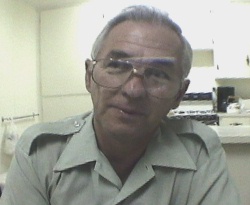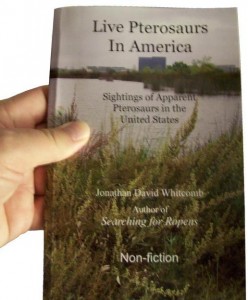David Woetzel and Garth Guessman succeeded in their 2004 expedition on Umboi Island, even though they failed to get a clear view of a ropen, for their interviews with native eyewitnesses proved of great worth in their cryptozoological investigation. To the expedition of these two American creationists, I devoted a chapter, in my nonfiction book Searching for Ropens (this book is in its second edition, with the third edition now being written). Woetzel and Guessman deserve more credit than a brief reference in Wikipedia, so I quote from the book, although only in brief summary:
Kepas [interpreter] accompanied Guessman and Woetzel to Umboi Island, but rather than take a boat, as I had, they flew in a small plane, searching the landscape as they passed over the center of the island. . . . they flew directly to the northern coast which they followed to the air strip at Lab Lab.
Here the three ropen investigators met Peter (Pita) Ake, magistrate of Mararamu Village, and the four men took a banana boat along the northeast coast. . . . Stopping to refuel at Kampalap, they learned that villagers occasionally see the ropen as it leaves a cave, most recently, three weeks earlier. . . . The creature flies to a promontory north of the village, landing and waiting on the tree tops before flying out to the reef.
Guessman, Kepas, Peter, and Woetzel continued on the banana boat northwest, leaving it near Aupwel, where they were greeted by many local villagers. An older man, Patrik Sual (whose ancestors lived near or on Mount Sual) told the investigators that he sees the ropen once a month, only from a distance; it flies from mountain to mountain. . . .
[In the first major trek on foot] . . . passing between the mountains Barik and Sual, they arrived at Arot Village where they made friends with local men and prepared for the excursion up to Bono, the crater lake of Mount Sual.
Guessman interviewed Jonathan Ragu, of Mararamu Village, who saw a ropen in July of 2004, when he and his daughter were at a beach. Between 7:30 and 8:00 p.m. . . . it flew away from the northwest coast of Umboi Island, heading toward Tolokiwa Island (northwest of Umboi). Glowing brightly red and white from the head and trailing edges of the wings, it flew fast, at tree-top level. . . . nose-to-tail length was eleven feet. From thirty-four silhouettes of bats, birds, and pterosaurs, Ragu chose the Sordes Pilosus, a Rhamphorhynchoid pterosaur.
They had many more interviews with eyewitnesses and explored some of the central areas of Umboi Island. They stayed for a few more days than my own two-week expedition, which was a few weeks earlier than their expedition. Woetzel had a sighting of the ropen light one night, briefly and at a distance. That deserves another quote from the book.
Woetzel reported to me, “My sighting was so quick that it was impossible to get a video–maybe two seconds. The light was very different from what Garth and Pastor Jacob saw. I suspect theirs was a meteor. I also saw some meteors while on night watch. They were whitish in color and had a tail. But this thing was different. It went about as fast as a meteor, but it was very different in coloration . . . almost golden and shimmering around the edges. It looked like an old-fashioned street light in the fog. There was no tail and it was flying horizontally from Mt. Barik toward Mt. Tolo.”
Woetzel continued, “I . . . saw it streaking across the horizon and disappearing behind Mt. Tolo. The size, color and speed made it immediately stand out as unlike any other thing I’ve ever seen in the sky. . . . Woetzel estimated the angular size to be 20%-25% of a full moon and said, “. . . larger than any meteor I’ve ever seen.”
For an introduction to ropen expeditions in Papua New Guinea, read “Basics on Living Pterosaurs . . .” (It includes a correction to a mistake about Woetzel’s ropen-light sighting.)




